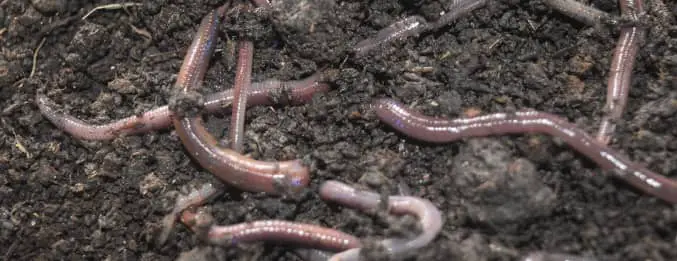Food insecurity is a real issue confronting us today. The COVID-19 pandemic and the accompanying recession have affected the lives of everyone. In addition, the war between Russia and Ukraine has influenced not only their neighboring countries, but a globally connected world. The economic lives of both countries at war interconnect with other countries in the world.
How can we get over these current issues that challenge each one’s ingenuity to survive the food insecurity?
Let’s define first what is food insecurity to put this discussion into its proper context.
Table of Contents
Defining Food Insecurity and Its Effects
According to Feeding America, food insecurity refers to a person’s lack of consistent access to enough food to live an active, healthy life, temporarily or for a long time. It measures how many people do not have the power to purchase their food needs.
Thus, food insecurity leads to hunger that prevents people from being productive.
If we bring this up to scale, more people who suffer from food insecurity leads to health issues in the long-term, and even wars among nations. Food insecurity can be the cause or outcome of conflicts, threatening the survival of entire populations.
Gundersen & Ziliak (2015) found out that food insecurity results in some birth defects, anemia, impaired thinking, aggression and anxiety, tendency to commit suicide, among others.
Birth Defects
The lack of food for mothers can cause birth defects to the newborn, which may be delivered prematurely. Essential minerals and vitamins necessary for the body’s needs increase the risk of malformations in babies. Nutrition significantly influences the growing fetus.
Anemia
If you don’t eat enough vegetables to obtain folate and eat little or no meat, anemia can set in. Vitamin B12 found in meat and folate or Vitamin B9 obtained from plants, are required in producing healthy red blood cells.
Impaired Thinking
Spencer et al. (2017) noted that early-life deficient diet coupled with stress can lead to cognitive dysfunction throughout the life of a person.
This means that the individual affected will have difficulty in maintaining attention, have difficulty learning, impaired memory, problems in processing information, slow to learn, and will experience difficulty in movement such as turning door locks or simple day-to-day activities like zipping trousers.
Aggression and Anxiety
Food insecurity because of climate change is highly possible (Eakin et al., 2010). High temperatures can lessen agricultural production and lead to civil conflict. The livelihood of people is at risk when there is drought leading to competition to get food for survival.
The lack of food causes anxiety, as families find no means to support themselves. Stress develops and accumulates among those affected.
Brinkman & Hendrix (2011) mentioned that food insecurity can be a source of grievances that motivate rebellion. There is a tendency for communal conflicts to occur in environments where there is food insecurity for a long time.
Suicide
According to Koyanagi et al. (2019), hunger or food insecurity is associated with the tendency to commit suicide among the 179,771 adolescents studied.
These are just some effects of lack of food security.
Hence, policy decisions at these trying times of recession are critical in addressing the outcomes of higher consumer prices for food and fuel because of the pandemic and the recent conflict in Europe between countries where one is a major producer of oil and the other a major exporter of agricultural products. Russia is the third major exporter of oil worldwide. Ukraine, on the other hand, is the 5th largest exporter of wheat. For some people in developing countries like Lebanon which imports 80% of its food from Ukraine, the limitations imposed by the war mean difficulty in meeting the population’s food needs.
What Can We Do as Individuals to Address Food Insecurity?
Given the food insecurity scenario, what adaptations can people make to become more resilient and avoid the negative effects associated with the lack of food?
I discuss two doable adaptations to avoid food insecurity that worked for me. Although these initiatives are difficult to implement given the many challenges associated with their performance, they do work if carried out consistently with a dab of ingenuity and innovation.
These initiatives started way back when things are still doing fine. It takes some great effort to carry out and maintain through the years. But well, it worked when they’re needed—satisfying food needs at individual, family, or home level.
2 Ways to Ensure Food Security in Homes
1. Plant Your Own Veggies
This simple approach makes sense. You need not buy vegetables in the market if you produce your own food at home. Even if you don’t have any money to spend on food, growing food in your backyard is very much doable.
Land to plant your vegetables is no longer a limitation because of the many approaches to growing vegetables. Articles and videos on innovative approaches to gardening abound online.
Examples of doable and inexpensive gardening techniques and complements which I undertook myself based on my knowledge, training and experience include:
a. Aquaponics
I set up a fish tank of a 3 x 1 x 0.5 m or roughly a 0.75 cubic meters of space. I started off with 40 pieces of tilapia fingerlings. After 411 days, the number has increased to 99 individuals as one of the fish bred with three mortalities. Four days ago, we harvested 13 grown-up tilapia weighing 2.658 kilograms.
The Harvard School of Public Health recommends eating 12 ounces (350 grams), broken into two meals, of fish every week. Hence, the fish we harvested can adequately support a family of three for two weeks and a half.
I removed the fish poop regularly using a simple suction pump and used the dark water to water the plants. I could see the plants thriving because of the nutrient input.
b. Vermiculture
Mindful of the wastes we produce at home, I started the culture of African night crawler (Eudrilus eugeniae) to hasten the decomposition of organic material and produce vermicast.
Vermicast is the casting or manure of earthworms, which is better than compost. It has higher NPK content thus improves soil structure and increases the soil’s water holding capacity. Thus, plants grow better with nutrient availability necessary for their growth.

I sold several kilos of vermicast to friends and colleagues who use the rich material in growing their vegetables and ornamental plants. Mass producing these soil-friendly, healthy, and organic fertilizer has a high potential because of its high demand.
c. Modified Lithic Mulching
Given the reclusion imposed by the government due to COVID-19, I looked for ways to grow plants in the limited space at home. Earlier, I bought seeds to start off a small garden. My collection of seeds came handy in my modified lithic mulching garden that produced more than enough lettuce, broccoli, night MalabarWheee spinach, mustard, pepper, and tomatoes.
All you need to have is less than 2 square meters of land to put up a modified lithic mulch garden. It entails virtually no cost with noteworthy benefits of a sustainable vegetable supply. You only need rocks, sand, coconut husk or similar material, and an organic bedding for the plants. And of course water to complete the plants’ requirements.
d. Phytoremediation gardening approach
I’ve studied ways on how to remediate barren lands through a technique called phytoremediation or I call it find a plant and support approach. The principle is simple: look for a plant that survives in that barren area and propagate it to cover a large area. The plant growing in that barren land has already adapted itself to that environment and learned to survive despite the odds.
Applying the principle, whenever I saw vegetables that grow within the backyard, I just surround it with rocks, enrich the soil, and water it regularly. I did so upon seeing a small pepper growing along the concrete fence. It amazingly grew and produced a lot of fruits.
2. Blog and Earn
Obviously, I regularly earn something from the ads shown on this site. I used to have none, so my expenses for the site are out of the pocket and is bad for my finances. A hobby need not cost me that much. So, besides my ebook sale, automatically supplied high paying Ezoic ads supplement enough to pay for hosting, website security, among others.
The ad revenue share is passive income that can tide your way through the pandemic and the recession. Advertisers get to show their products and you get paid in return.
The rule in blogging is to write regularly to share your ideas with others. While I used to shun advertisers on this site, I realized this is a good source of income to keep this site going. Without ads, you would not have read this article and benefit from it.
So let’s have a positive attitude towards ads as they keep things going and support many people. In fact, Google derives most of its income by providing advertising space or serves as a brokerage for web space for their clients. Google Ads makes most of its revenue, amounting to a staggering $209 billion dollars (!!!) of income in 2021.
That’s a lot! Let’s take a part of that pie and leave our financial worries.
References
Eakin, H., Bohle, H. G., Izac, A. M., Reenberg, A., Gregory, P., & Pereira, L. (2012). Food, violence and human rights. In Food security and global environmental change (pp. 265-291). Routledge.
Gundersen, C., & Ziliak, J. P. (2015). Food insecurity and health outcomes. Health affairs, 34(11), 1830-1839.
Hendrix, C., & Brinkman, H. J. (2013). Food insecurity and conflict dynamics: Causal linkages and complex feedbacks. Stability: International Journal of Security and Development, 2(2).
Koyanagi, A., Stubbs, B., Oh, H., Veronese, N., Smith, L., Haro, J. M., & Vancampfort, D. (2019). Food insecurity (hunger) and suicide attempts among 179,771 adolescents attending school from 9 high-income, 31 middle-income, and 4 low-income countries: A cross-sectional study. Journal of affective disorders, 248, 91-98.
Spencer, S. J., Korosi, A., Layé, S., Shukitt-Hale, B., & Barrientos, R. M. (2017). Food for thought: how nutrition impacts cognition and emotion. npj Science of Food, 1(1), 1-8.
©2022 September 24 P. A. Regoniel



